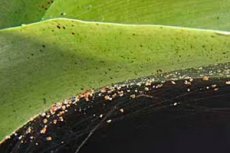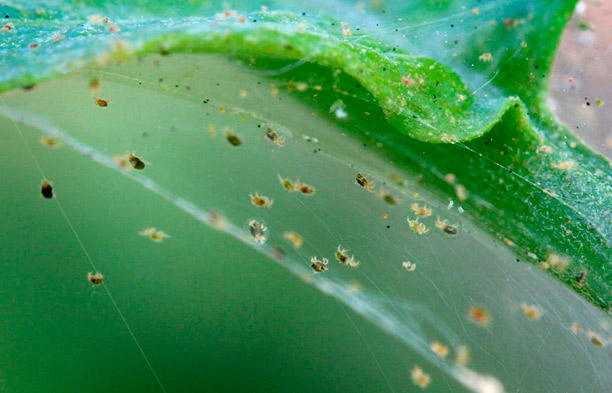Mites on orchids
Last reviewed: 29.06.2025

Mites on orchids are one of the most common problems faced by owners of these beautiful plants. Spider mites, armor mites, and red mites can cause significant damage to the plant, leading to weakening, loss of ornamental value, and even death. In this article, we will take a detailed look at how to identify and get rid of mites on orchids, as well as discuss effective methods of controlling mites on orchids.
Types of mites on orchids
Various types of mites can be found on orchids, including:
- Spider mite — one of the most dangerous pests for orchids. These tiny mites are almost invisible to the naked eye, but their presence can be noticed by the appearance of webbing on the leaves and stems. Spider mites on orchids feed on the plant's sap, causing yellowing and leaf drop.
- Armor mite — this type of mite is distinguished by a hard shell that protects it from external influences. Armor mites feed on the roots and stems of the plant, which weakens the orchid and slows its growth.
- Red mite — another pest that often appears on orchids. Red mites on orchids cause damage to the leaves, making them spotty and gradually leading to their drying out.
- Flat mite — a less common type of mite that can also affect orchids. It feeds on plant sap, leaving spots on the leaves and causing deformation.
Signs of orchid mite infestation
Early detection of mites is the key to successful pest control. Here are the main signs to look out for:
- Webbing appearance: the presence of webbing on the leaves and stems is the first sign of a spider mite infestation. The webbing is often very thin and hard to see, so it's worth regularly inspecting the plant.
- Leaf color change: leaves may turn yellow, become spotted, or take on a silvery hue. This indicates that mites are sucking the sap from the plant tissue.
- Growth slowdown: orchids infested with mites begin to grow poorly, may stop blooming, and new leaves and roots develop more slowly.
- Leaf deformation: leaves may become deformed, curl, and develop spots. This is also a sign of mite activity.

How to combat mites on orchids?
Fighting mites requires consistency and the use of different methods. Here are the main ways to combat mites on orchids:
- Manual treatment: in the early stages of infestation, you can use a cotton swab soaked in soapy water or alcohol to remove mites from the surface of the leaves. This allows for partial removal of the pests and slows their spread.
- Treatment with acaricides: acaricides are special chemicals designed to combat mites. Treating orchids with products like fitoverm or aktara can effectively destroy mites at all stages of their development. It is important to follow the application instructions and take safety precautions.
- Increase humidity: mites prefer a dry environment, so increasing the humidity around the plant can help fight them. Use a humidifier or mist the orchid (but avoid water accumulating in leaf axils).
- Isolate the infested plant: if you find mites on one of your orchids, isolate it from other plants. This will prevent the pests from spreading to other flowers in your collection.
- Home remedies: as an alternative to chemical treatments, you can use garlic infusion or neem oil. These substances have repellent and antiseptic properties and can help in fighting mites.
Preventing mites on orchids
Prevention is the best way to protect orchids from mite infestations. Here are some recommendations that will help avoid the appearance of pests:
- Regular inspection: regularly inspect your orchids, especially the undersides of leaves, for the presence of webbing or mites. This will allow you to detect the problem in time.
- Maintain optimal humidity: keep the humidity level in the room at 60-70%. This will not only improve conditions for the orchid but also reduce the risk of mite infestation.
- Maintain cleanliness: regularly wipe the leaves of the orchid with a damp cloth to remove dust and prevent the formation of webbing. This will also help prevent mite infestation.
- Isolate new plants: new plants brought into the home should be isolated for several weeks to ensure they are not infested with mites or other pests.
Conclusion
Mites on orchids, whether they are spider mites, armor mites, or red mites, can cause significant damage to your plant if no action is taken in time. It is important to regularly inspect your plants, follow care rules, and take preventive measures to avoid infestation. If mites do appear, the use of acaricides, manual treatment, and increased humidity will help effectively deal with the problem. Proper care and attention to detail will allow your orchids to stay healthy and delight you with their blooms.
